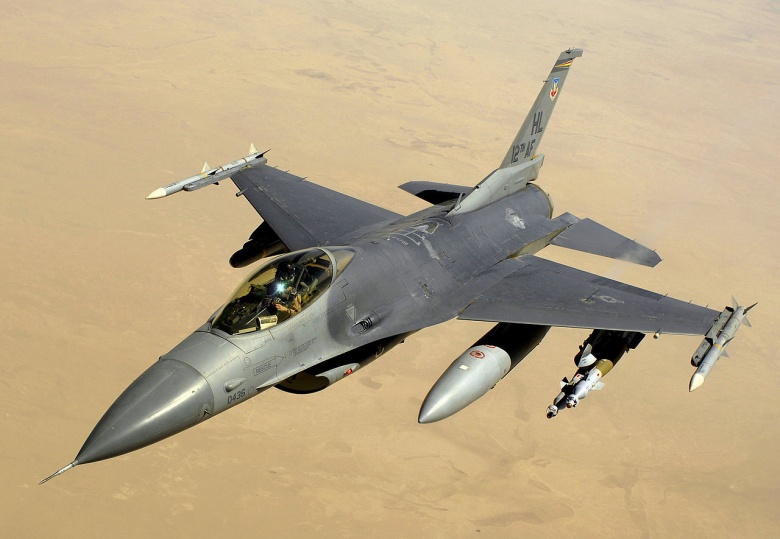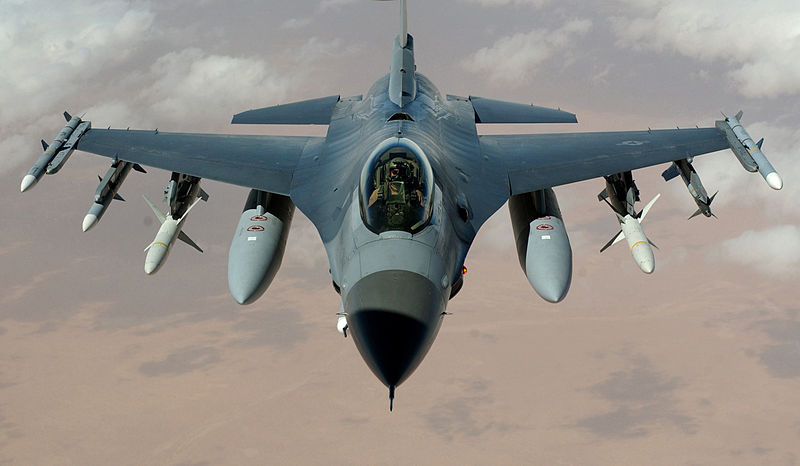F-16 Fighting Falcon: The Warplane That Changed Aviation History Forever
The fast and agile F-16 Fighting Falcon isn't just one of the top fighters it is also among the most cost-effective. Though it lacks the range and payload of the larger twin-engine F-15 Eagle, it also costs less than half – which is why the fourth-generation F-16 has been in use since the 1970s and will likely keep flying for many more years to come.
The F-16 Fighting Falcon Might Not Have its Wings Clipped Anytime Soon - In September 2023, Lockheed Martin announced that it would ramp up production of its F-16 Fighting Falcons – with those aircraft being earmarked for delivery to Taiwan. It was just a year ago that the first F-16 of Block 70/72 configurations rolled out of the aerospace and defense giant's Greenville, S.C., facility. The factory was geared up to build at least 128 more of the Fighting Falcons by the end of the decade.
To date, more than 4,600 aircraft have been built since production was approved in 1976 – and while it is no longer being acquired by the U.S. Air Force, Lockheed Martin continues to build the F-16 for foreign customers around the world. It remains the world's most successful, combat-proven multi-role jet fighter ever produced.
The fast and agile F-16 Fighting Falcon isn't just one of the top fighters it is also among the most cost-effective. Though it lacks the range and payload of the larger twin-engine F-15 Eagle, it also costs less than half – which is why the fourth-generation F-16 has been in use since the 1970s and will likely keep flying for many more years to come.
Since it first entered service in 1979, the Fight Falcon has engaged in more than 400,000 combat sorties and has more than a combined 19 million flight hours. Moreover, the F-16 has been adapted to complete several missions, including air-to-air fighting, ground attack, and electronic warfare. As a combat fighter, it has proven to be highly maneuverable while its combat radius exceeds that of its potential threats.
Along with the larger F-15 Eagle, the Fighting Falcon was one of the world's first aircraft to withstand higher g-forces than the pilots. These are notable accolades for an aircraft that really began as a technology demonstrator to determine where it was possible to build a versatile fighter that could be cheaper than the F-15.
The Lightweight Fighter Program
The F-16's origins began in 1972, when the United States Air Force's Prototype Program Office at Wright-Patterson Air Force Base (AFB), Ohio, launched its Lightweight Fighter (LWF) program. Its request for proposals (RFP) called for a highly maneuverable fighter with a significant emphasis on reduced weight but also cost.
It was notable that the program wasn't originally intended to lead to a production aircraft, but rather to determine what was possible at what cost.
In total five contractors competed for the LWF, and two finalists emerged – General Dynamics and Northrop, which would build two prototypes of their respective designs, the YF-16 and YF-17. As the program advanced, four European members of NATO – Belgium, Denmark, the Netherlands, and Norway – sought to replace the F-105Gs with a lighter and more affordable fighter.
As a result, in April 1974, the LWF was revised and became the Air Combat Fighter (ACF) program, which led to the development of the F-16. It was truly an international aircraft – with final airframe assembly in Belgium and the Netherlands, while components came from all five countries.
Combat History
The aircraft entered operational service with the United States Air Force's 34th Tactical Fighter Squadron, 388th Tactical Fighter Wing, at Hill Air Force Base (AFB), Utah, on October 1, 1980 – and that month it achieved combat-ready status.
However, it wasn't employed in combat with the U.S. Air Force until 1991's Operation Desert Storm, where it flew more sorties than any other aircraft. According to the Air Force, the fighters were used to attack airfields, military production facilities, Scud missile sites, and a variety of other targets.

The Fighting Falcon was next employed during Operation Allied Force in the skies over the former Yugoslavia, where the multirole fighters flew a variety of missions including suppression of enemy air defense, offensive counter air, defensive counter air, close air support, and forward air controller missions. Mission results were reported to be outstanding as the F-16s destroyed radar sites, vehicles, tanks, MiGs, and buildings.
Following the Sept. 11, 2001, terrorist attacks on the United States, the Fighting Falcon was employed major component of the combat forces committed to the war on terrorism flying thousands of sorties in support of operations Noble Eagle (Homeland Defense), Enduring Freedom in Afghanistan and Iraqi Freedom.
Upgraded and Improved
The latest version of the Fighting Falcon is powered by a single engine, either the General Electric F110-GE-129 or Pratt and Whitney F100-PW-229 and while it is a speedy fighter it can pack a serious punch. The F-16 has nine hardpoints for weapons payloads – including one at each wingtip, three under each wing, and one centerline under the fuselage.
It has carried a variety of air-to-air missiles including the Lockheed Martin/Raytheon AIM-9 Sidewinder, Raytheon AMRAAM, Raytheon Sparrow, MBDA (formerly Matra BAE Dynamics) Skyflash and ASRAAM, and the MBDA R550 Magic 2; and in April 2004 it was the first fighter to fire the new-generation AIM-9X Sidewinder. Air-to-surface missiles carried on the F-16 include Maverick, HARM, and Shrike missiles, manufactured by Raytheon, and anti-ship missiles including Boeing Harpoon and Kongsberg Penguin.

Back on the Assembly Line
Lockheed Martin, which acquired General Dynamics' aviation manufacturing business in 1993, delivered the last F-16 from Fort Worth to the Iraqi Air Force in November 2017. The company ended 40 years of F-16 production at its Fort Worth, Texas facility to make room for the new F-35 Lightning II assembly line.
However, in June 2022, it was announced that the aerospace giant would resume production beginning this year at its new factory in Greenville. It is working overtime as Lockheed Martin has a backlog of almost 130 orders from customers around the world.
While the U.S. Air Force bought its last new F-16, a Block 50 model, in 2005, many of its Fighting Falcons have received many of the improvements available in the Block 70, notably the AESA radar.
It is clear that the aircraft –which took its first (and unplanned) flight nearly 50 years ago during a high-speed taxi test – won't have its wings clipped anytime soon!
Author Experience and Expertise
A Senior Editor for 19FortyFive, Peter Suciu is a Michigan-based writer. He has contributed to more than four dozen magazines, newspapers, and websites with over 3,200 published pieces over a twenty-year career in journalism. He regularly writes about military hardware, firearms history, cybersecurity, politics, and international affairs. Peter is also a Contributing Writer for Forbes and Clearance Jobs. You can follow him on Twitter: @PeterSuciu.


